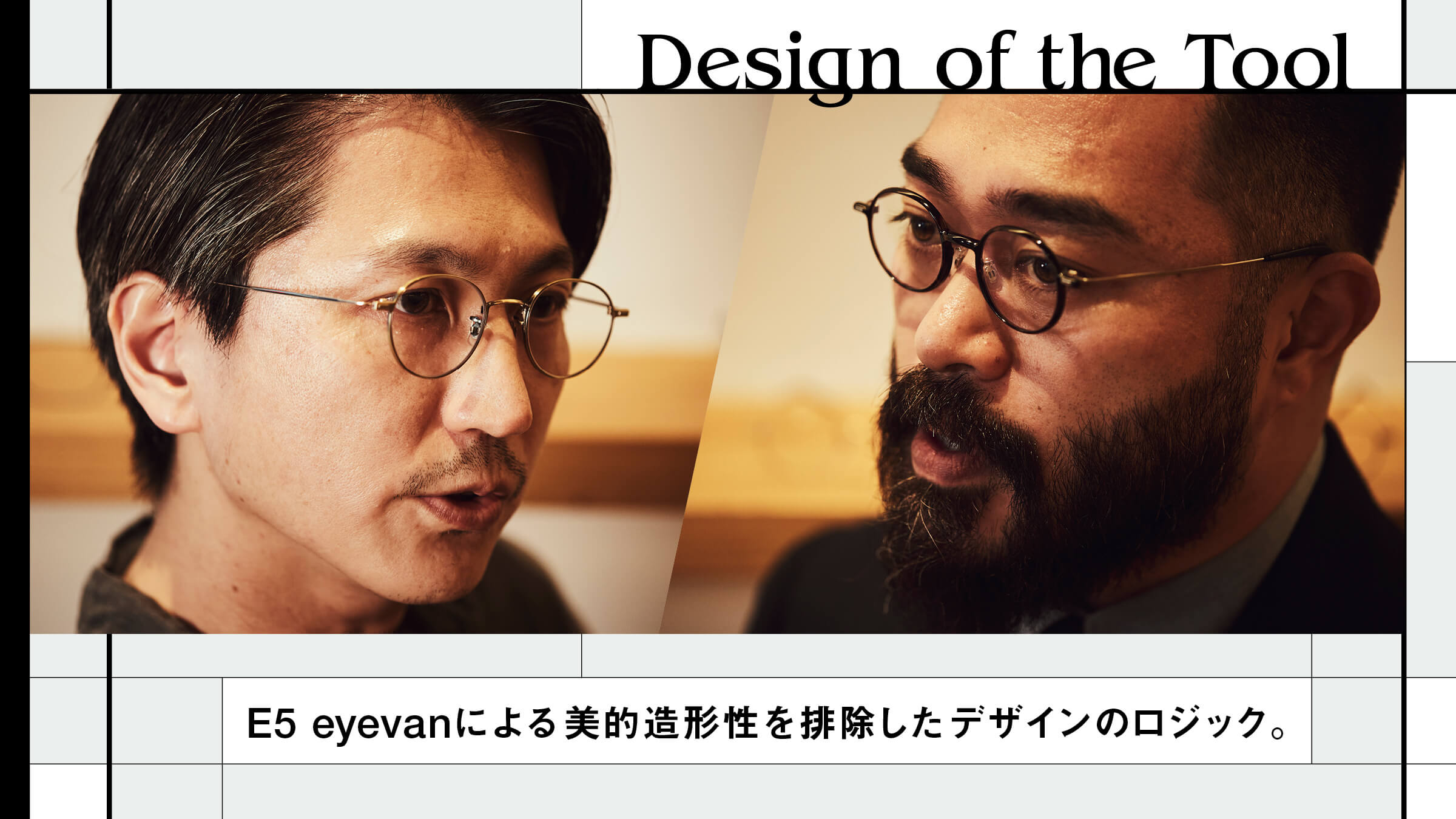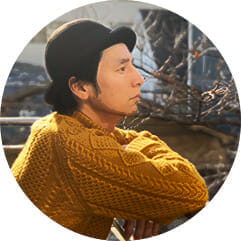We will make everything work with only what we really need.
Ivan" has now launched its fifth brand, "E5 eyevan". Please tell us about the concept and how it was born.
Nakagawa: Ivan was originally founded in 1972 by Tetsuji Yamamoto, the current chairman of the board, in collaboration with Kensuke Ishizu of VAN. The concept of the eyewear brand was "glasses that can be worn," and it was started from the perspective of exterior design and fashion. So, when I joined the company and was involved in the design of several brands, I kept this in mind while thinking about the form and function of eyeglasses. It came naturally to me.

Nakagawa: . However, by nature, glasses are not a fashion item, but a tool. Ideally, lenses are there to reinforce vision, and the frames that support them should be light, comfortable to wear, and unbreakable.
I have always loved military and workwear, and the design of such clothing is born from its function. While I admired such items, I had some doubts about the fact that the glasses I was making were different from them. It may be an exaggeration to call it a return to my roots, but I wanted to design glasses as tools in their own right, and that is how E5 eyevan was born.
However, this was the exact opposite approach to the concept of "glasses to wear. I consulted with Mr. Yamamoto, the representative of the company, and he said, "That sounds great," so we started working on the design about three years ago.
. The concept is easy to understand when you hear it, but when it comes time to create it, it seems very difficult.

model:m2 color:ag/wg ¥49,500
Nakagawa: . Yes, that's right. It is a commonplace concept that glasses are tools. The clothes we wear in everyday life were originally created as tools, and designs were added over time. It is very difficult to take a tool that is taken for granted and re-create it with a fresh look as a tool.
. but I felt like I wanted to challenge that. I had felt the joy of making glasses from a fashion point of view, but I wanted to go one step further from there. So I consulted with the representative and got the OK, and I found myself in a situation where I couldn't back down. When I told my colleagues about the concept, all of them said, "I think it's a good idea, but can you really make it? I was all, "I think it's a great idea, but can you really make it? I had set myself a difficult task....
Nakamuro: Design is a word with a very broad meaning. I think you have really delved into the meaning of the word "design" this time. I used to work at a select store that dealt in dress clothing and designer brands, and I was young at the time, so there was a time when all I saw was superficial design, such as coolness and beauty.

model: p2 color: dm/st ¥47,300
Nakamuro: At the time, I didn't have much knowledge about outdoor wear, and at first I wasn't sure if I wanted to take on the job. At that time, I was told by a client that "in outdoor wear, function determines design," and I felt like my common sense had been overturned, and I was instantly absorbed in the project. I think that is exactly what Mr. Nakagawa means by "design" as a tool. As a result, I think such an approach is directly related to usability and functional beauty.
Nakagawa: I mentioned earlier that I look at various parts in my daily life, and I was looking at the design of such parts. For example, epaulettes on military wear are used to secure luggage when it is slung over the shoulder, and they are decorated to indicate rank, so they have a proper meaning. I was always interested in such "meanings.
However, after I decided to work on "E5 eyevan," I began to look at it more realistically, as a necessary function of a tool. What I became very conscious of is that there are devices that are used to protect people, such as the metal fittings that connect the chain and bar of a swing set. For example, the metal fittings that connect the chain and bar of a swing set. While looking at such serious parts, I began to think about what kind of design is necessary for tools.
Until then, you had been looking at the meaning and reason for the design, but now you are focusing on the mechanism and structure of the design.

Nakagawa: Yes, it is. . it's not so much about design , but more about a mechanism that is essential and sorely needed.
. So you replaced them with glasses.
Nakagawa: Our thinking has changed to the point where we are now thinking that everything should consist of only what is truly necessary. This may sound similar to the approach to design up to now, but in fact it is different. I used to say, "I like designs that have meaning," but this time it's not like that. Until then, I had picked up on the element of "coolness" and delved into its meaning, but with "E5 eyevan," I feel as if I am building up the reasons why it is necessary from the inside. . I thought that if I did that, something cool would naturally come out of it.
How long did it take you to come up with that idea?
Nakagawa: About a year and a half after consulting with the representative, it had not taken shape at all, and then the pandemic happened , and the situation around the world changed drastically. That is when the pandemic happened and the situation around the world changed drastically. Even though I had expressed a desire to work on this project, I now realize that I myself did not feel the need for this kind of design. I was satisfied with "10 Ivan" and "Eyevol," and I didn't feel any inconvenience wearing them.
But you changed your mind after the Corona disaster.
Nakagawa: Yes, that's right. I saw an image of a medical worker wearing glasses whose temples had come unscrewed, and he was working on holding them in place while applying first aid with cellophane tape or something. There were no opticians at the time, and I thought about what I could do. It is obvious, but screws should be harder to come off, and by extension, harder to break. From that point on, I was able to concentrate a lot more. Without that opportunity, I think I would have just kept thinking about it.

Nakamuro: It is very difficult to realize that, isn't it? Glasses have a fixed shape and are already completed.
Nakagawa: . yes, it has been this way for almost 200 years.









